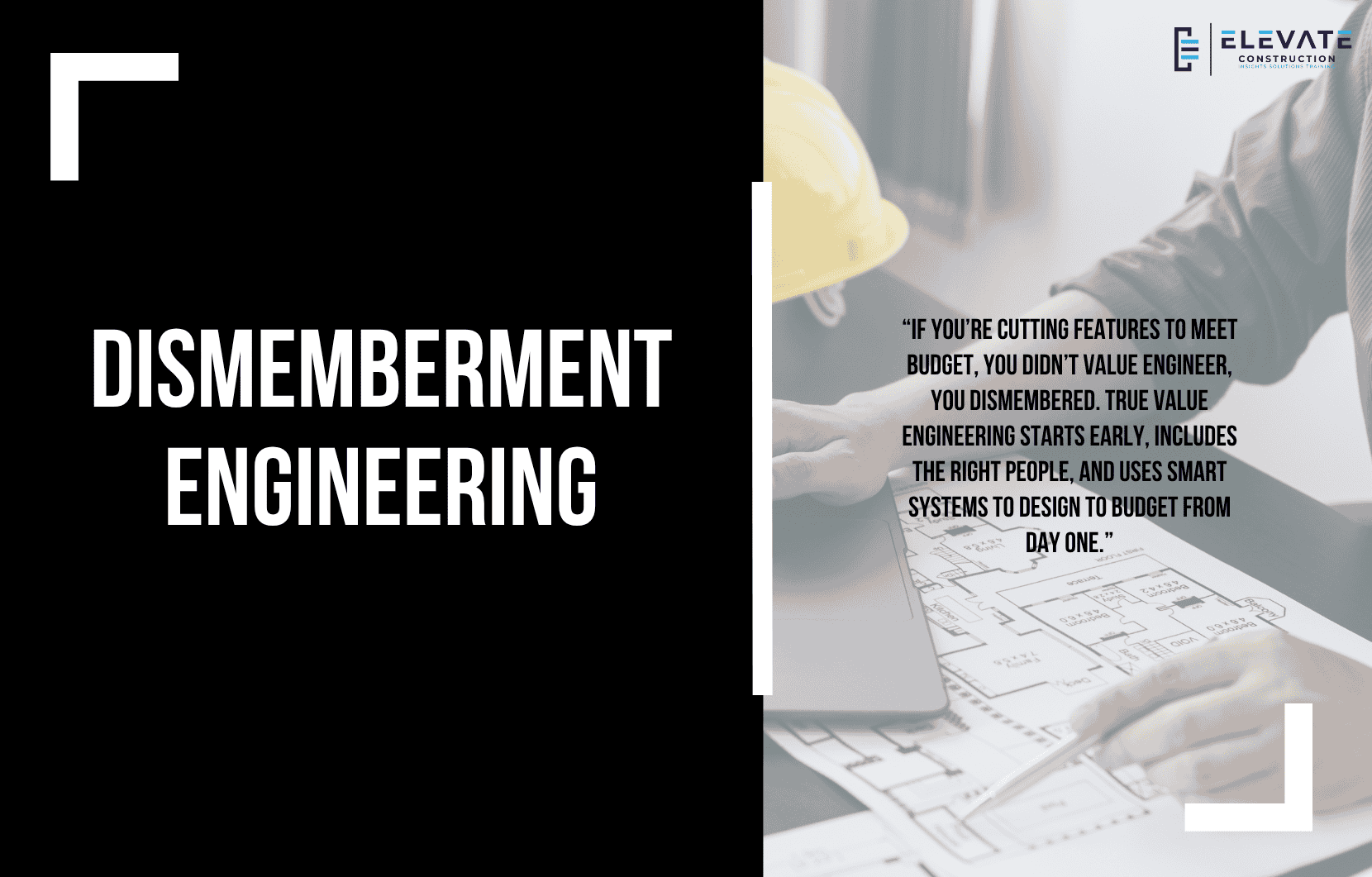Why “Value Engineering” is Often Just Dismemberment Engineering?
Let me be blunt: what we often call “value engineering” in the construction industry is anything but. Most of the time, it’s dismemberment engineering a desperate act of chopping up a finished design just to meet budget after it’s already too late.
In this blog, I want to talk honestly about why this model is broken, and what we can do to fix it.
Value Engineering vs. Dismemberment Engineering
Let’s set the record straight.
True value engineering is creative. It’s thoughtful. It’s about bringing together smart people early in the process to find ways to increase client value while reducing unnecessary cost. It’s proactive. Collaborative. Strategic.
But here’s what really happens far too often:
- A design team works in isolation.
- Trade partners aren’t brought in.
- The design is pushed forward to completion then someone finally checks the budget.
- Surprise: the project is millions over.
- Cue the “value engineering” phase, which usually means slashing the project.
Suddenly the brick veneer is gone. The elegant staircase? Cut. The canopies or carports? Deleted. The finishes downgraded.
This isn’t value engineering it’s dismemberment.
The Fallout of Late-Stage “VE”
When we fall into this pattern, here’s what we really create:
- Frustration for trade partners who weren’t involved early
- Waste from redoing design work
- Delays from scope changes and redesign
- Disappointment for owners who lose what they loved
- Demoralisation for design teams who poured their passion into the project
- Erosion of trust between all parties
And worst of all?
We end up delivering a building no one is proud of.
The Better Way: Target Value Delivery
There is a better way. It’s called Target Value Design (or Target Value Delivery).
Here’s how we do it right:
- Start with the budget. Set the pro forma or target cost upfront before design even begins.
- Bring in the GC early. I can’t stress this enough. General contractors must be involved to provide cost and constructability feedback during design, not after.
- Engage trade partners. Use design-assist scopes and letters of intent to bring in subs early during precon.
- Co-create the design. Run page flips, host design charrettes, and keep the team in alignment using real-time visuals.
- Use Lean systems. Takt planning, Last Planner, and visual management help keep the design and budget aligned throughout.
When we work this way, we stop reacting and start building the project everyone wants from day one.
Final Thoughts:
We need to stop accepting dismemberment engineering as the industry norm. It’s not normal. It’s not okay. And it’s absolutely not “value.”
Until we get so annoyed by this broken process that we refuse to repeat it nothing will change. But when we start designing to budget from the start, bringing the right people into the room early, and using systems that promote collaboration, everything changes.
And that’s what we’re here to do.
Key Takeaway
If you’re cutting key features to hit a number, you’re not value engineering you’re dismembering. True value engineering happens early, involves the right people, and uses smart Lean systems to design to the budget from day one.
Let’s do better. On we go.
If you want to learn more we have:
-Takt Virtual Training: (Click here)
-Check out our Youtube channel for more info: (Click here)
-Listen to the Elevate Construction podcast: (Click here)
-Check out our training programs and certifications: (Click here)
-The Takt Book: (Click here)
Discover Jason’s Expertise:
Meet Jason Schroeder, the driving force behind Elevate Construction IST. As the company’s owner and principal consultant, he’s dedicated to taking construction to new heights. With a wealth of industry experience, he’s crafted the Field Engineer Boot Camp and Superintendent Boot Camp – intensive training programs engineered to cultivate top-tier leaders capable of steering their teams towards success. Jason’s vision? To expand his training initiatives across the nation, empowering construction firms to soar to unprecedented levels of excellence.
On we go


